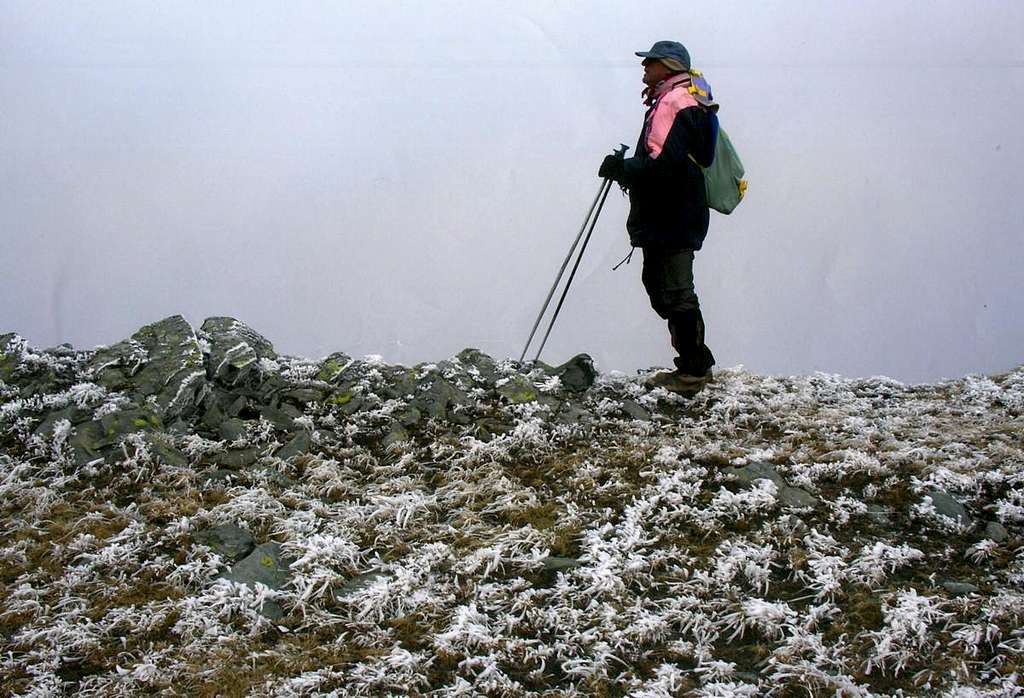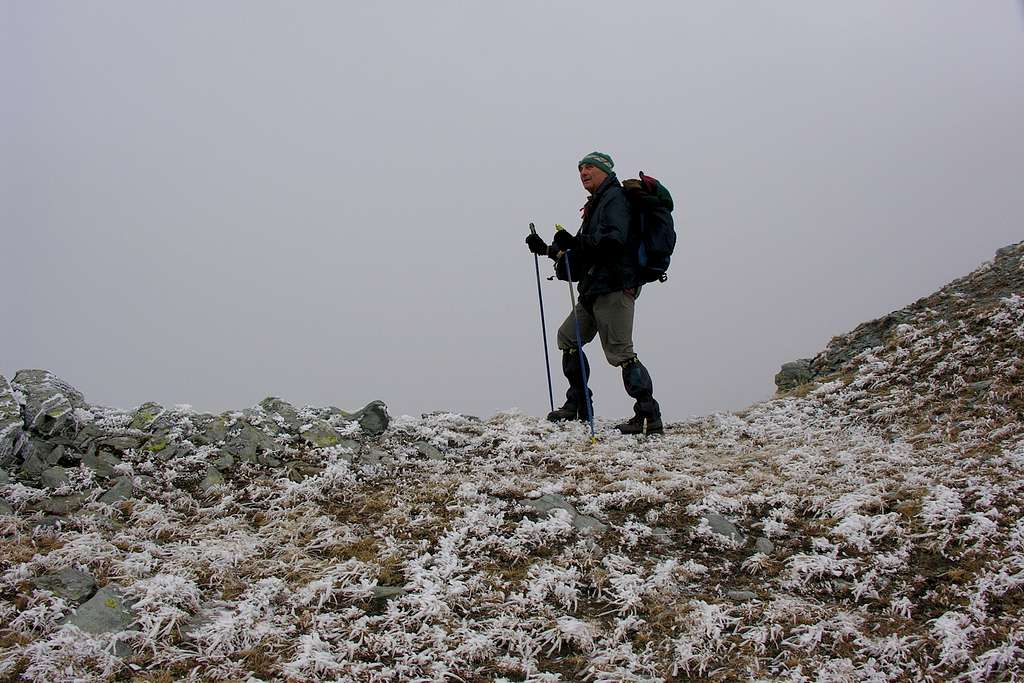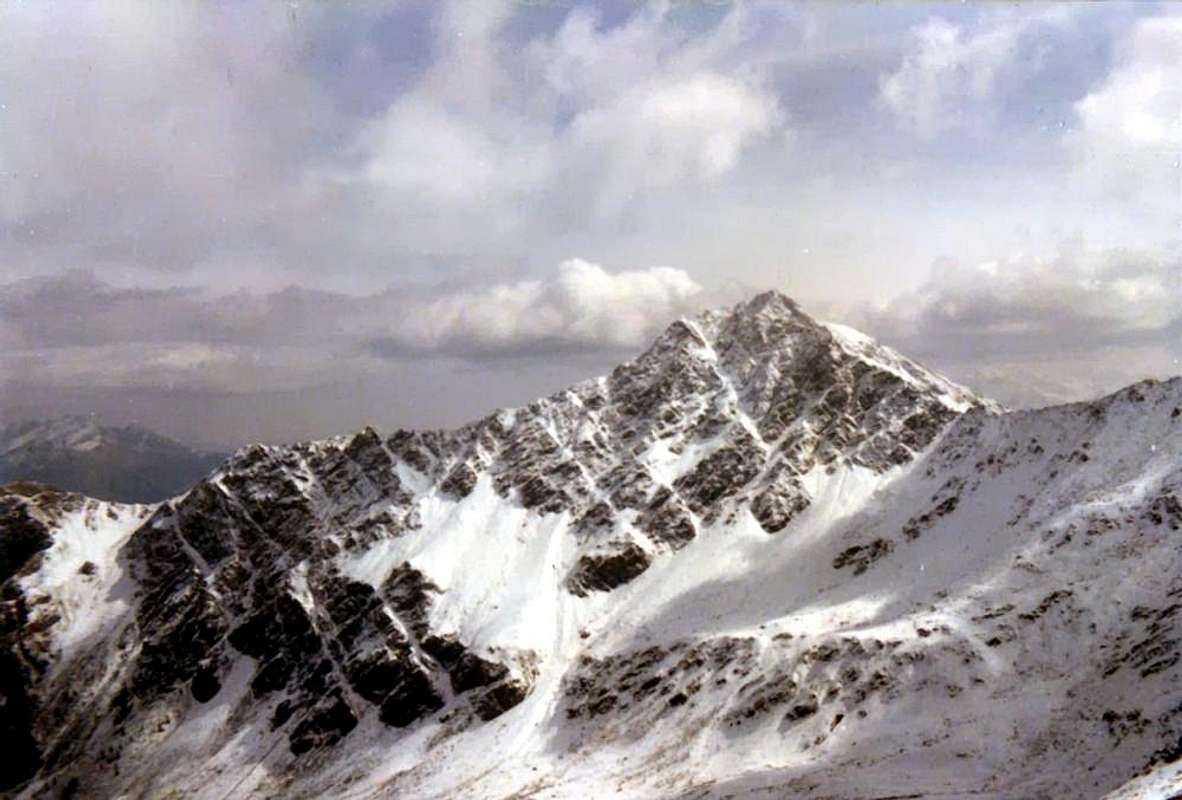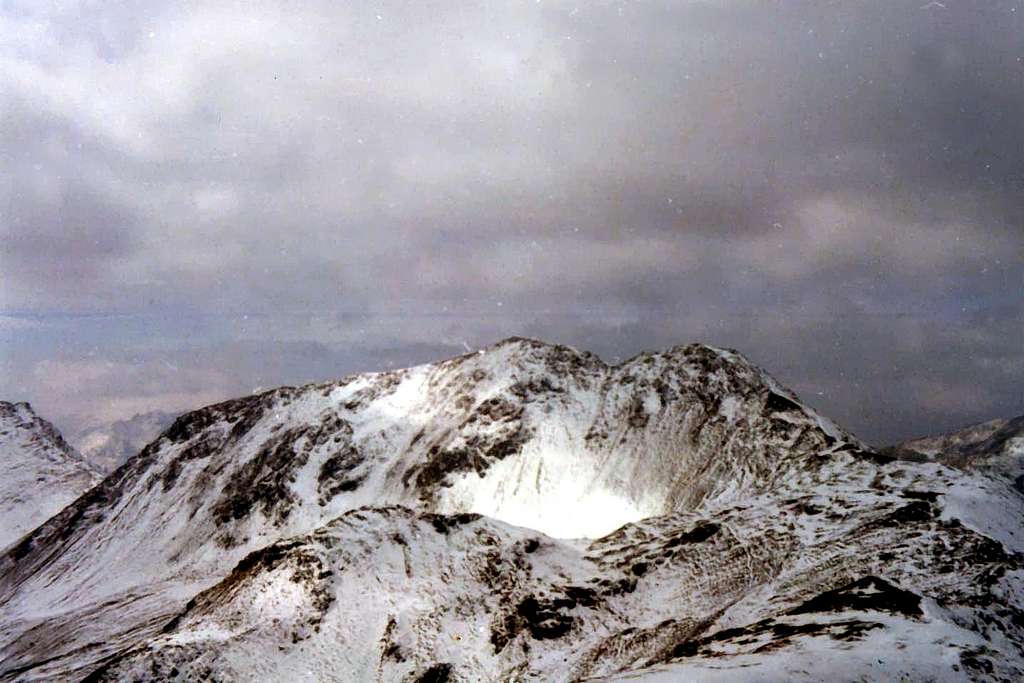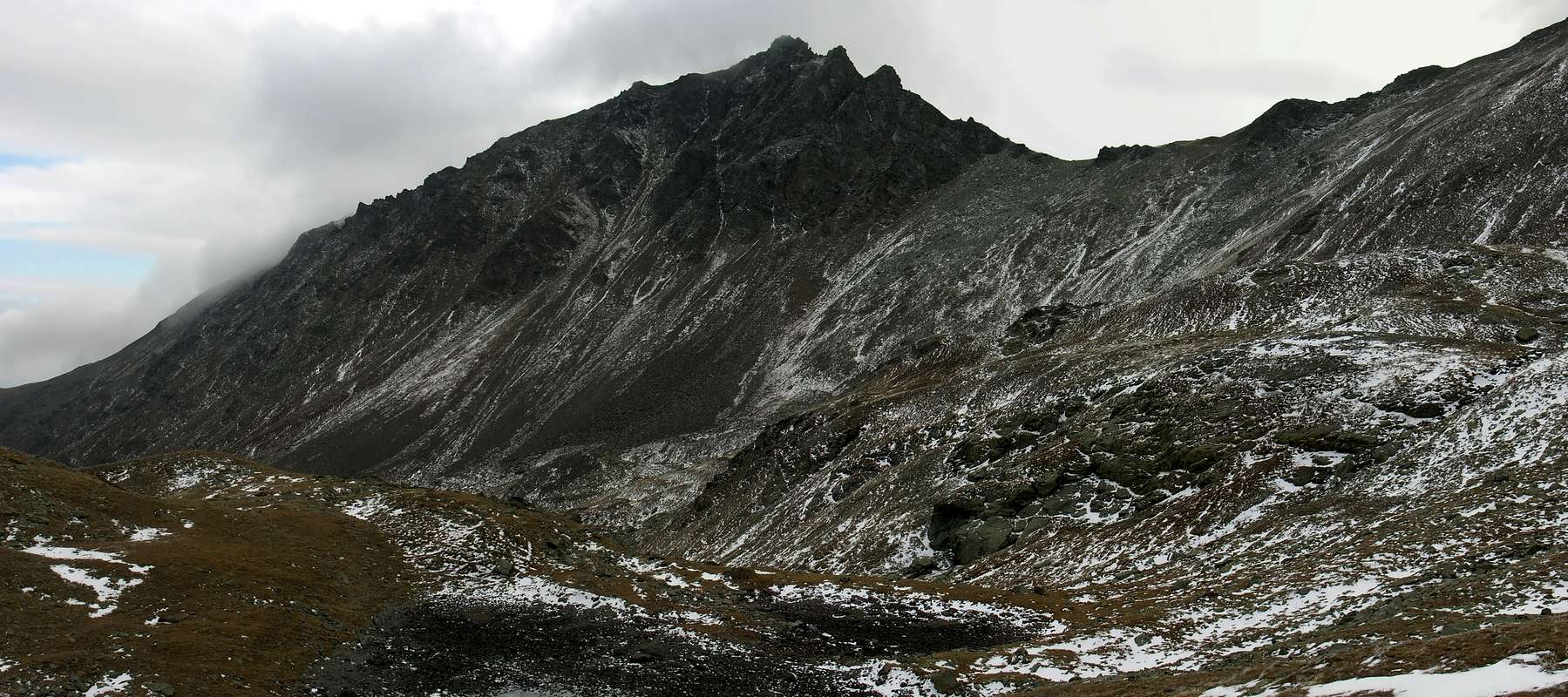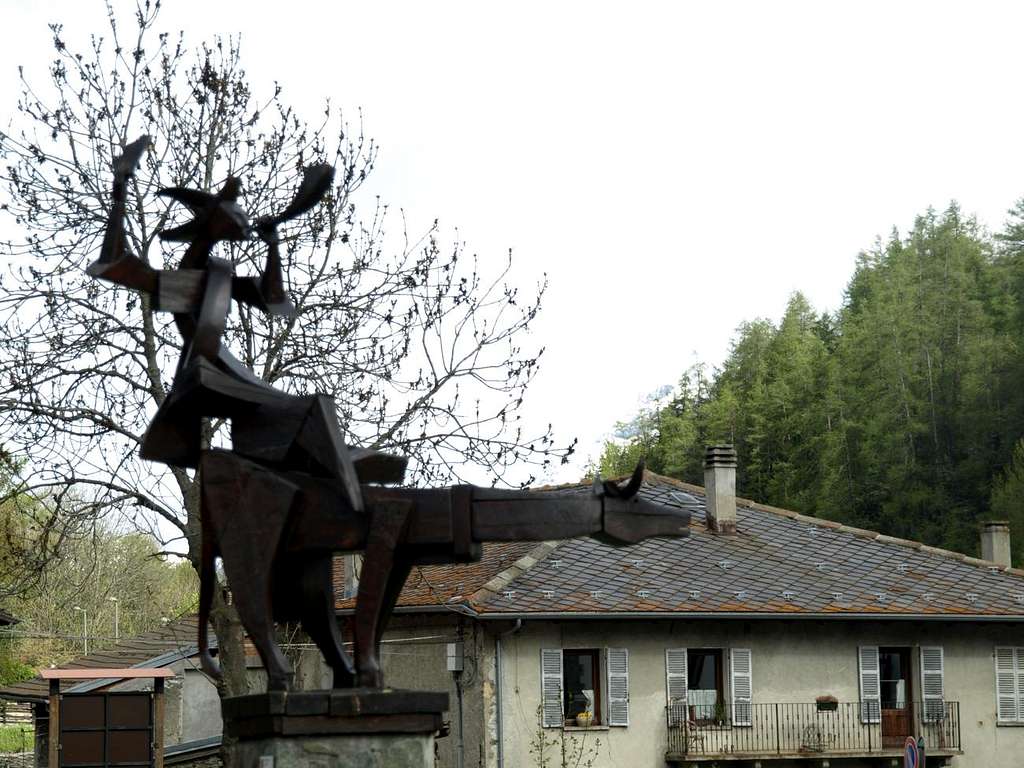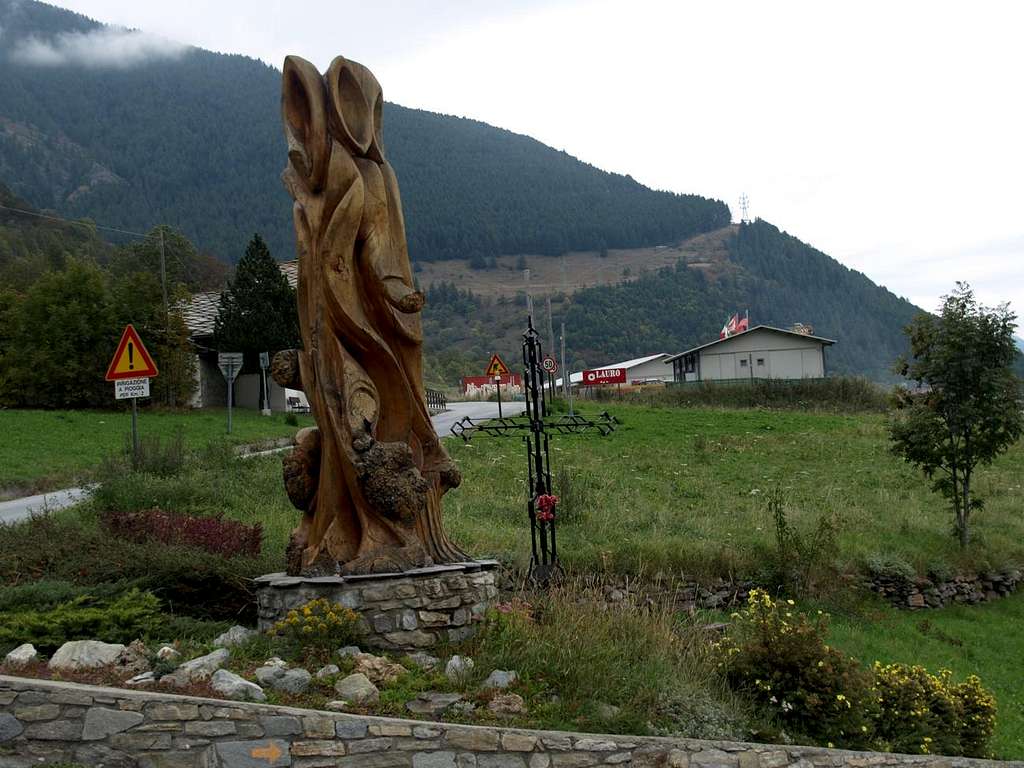-
 3155 Hits
3155 Hits
-
 80.49% Score
80.49% Score
-
 12 Votes
12 Votes
|
|
Area/Range |
|---|---|
|
|
45.81520°N / 7.19744°E |
|
|
Hiking |
|
|
Spring, Summer, Fall, Winter |
|
|
9754 ft / 2973 m |
|
|
Note
La montagna chiama i suoi figli, ed essi rispondono fedelmente al suo appello… Osvaldo Cardellina, Diario alpinistico, 1964-65 Page texts: @ OsvaldoCardellina "Osva", passed away on May 2, 2022. Page owners: Christian Cardellina e Osvaldo Cardellina. Any updates from September 12, 2022: Antonio Giani, page administrator, friend and climbing companion. Testi della pagina: @ OsvaldoCardellina "Osva", scomparso il 2 maggio 2022. Proprietari pagina: Christian Cardellina e Osvaldo Cardellina. Eventuali aggiornamenti dal 12 settembre 2022: Antonio Giani, amministratore della pagina, amico e compagno di salite. |
Overview
L'"Ouverture" al Gran San Bernardo appare qual gran vallata a forma d'espanso bacino sopra Gignod, Etroubles, St. Oyen, precedenti St. Rhémy-en-Bosses, S'estende dapprima verso Nord e poi Nord-nordovest per 34 Km. dalla Città di Aosta (583 m) fino al Lago del Gran San Bernardo (2.449 m), ormai completamente in territorio svizzero. Ma la "vera" valle inizia appena prima del Comune di Saint Rhémy-en-Bosses (1.619 m; al Km. 23, dopo l'unificazione dei due Comuni), mentre nella parte inferiore abbiamo il tratto in Comune con la Conca di By, la Valpelline e la successiva deviazione verso la Valle di Ollomont, quest'ultima a guisa di trait d'union tra le altre due. Al Km. 18,2 la Strada Statale n° 27, dopo il Comune di St.-Oyen (1.373 m), lascia verso Ovest l'ingresso per il Traforo con Autostrada del Gran San Bernardo, nonché le frazioni dell'ex Comune di Bosses all'ingresso dell'omonima Comba che, preceduta dalla Meridionale "Combe de Flassin", raggiungente i Colli di Flassin (2.605 m), Finestra (2.729 m) e di Ars od Arsy (2.543 m), ai confini con i Valloni di Vertosan (sopra il Villaggio di Vens ed il Comune di St. Nicolas), Verrogne (verso la Comba di Vetan) ed Arsy (sopra ad Etroubles). Da Saint Rhémy-en-Bosses la valle completa la sua forma topograficamente sinuosa ritornando definitivamente verso Settentrione fino a raggiungere il Colle del Gran San Bernardo con il suo Ospizio (2.469m), al confine con la Svizzera. Quindi una valle che, subito dopo St. Oyen, si sdoppia con due importanti ramificazioni:
a) - la prima a Settentrione verso il "Grande"
b) - la seconda a Sudovest verso i Colli di Tardiva (2.400 m), Arsy od Ars (2.543 m), Innominato o del Fallère (2.674m), Finestra (2.793 m), Vertosan Nordovest (2.689 m), Flassin (2.605 m), Citrin (2.484 m), Serena (2.546 m), Malatrà (2.928 m), Bellecombe (3.000 m), Saulié o des "Ceingles" (2.816 m) ed infine a chiusura del cerchio di St. Rhémy (2.560 m), dove la Valle del Gran San Bernardo si espande da Ovest ad Est tra l'Aiguille de Leisasses e la Testa di Barasson sul confine con la Svizzera. Come vedesi tutta una serie di valichi che rispettivamente conducono ad Oriente con i Valloni di Buthier, Arsy, a Meridione verso quelli di Clusella, Verrogne-Vetan, Vertosan, Planavalle, ad Occidente verso la Val Ferret Italiana, a Settentrione verso la Comba Thoula ed a Nordovest direttamente verso il Gran San Bernardo.
Tra questi quello di Flassin, conosciuto in loco anche come Combe de Flassin, costituisce il terzo partendo da Oriente mettendo in comunicazione la valle medio-bassa del Gran San Bernardo con il Bacino di Vetan nonché l'attiguo Vallone di Vertosan al di sopra dei Comuni d'Avise, St. Nicolas e St. Pierre, appartenenti alla Valle Centrale della Dora. Possiede una cerchia di montagne non molto alte e neppur famose, ma singolari per la loro vetustà, che circondano questo abbastanza lungo vallone traente l'origini da Saint-Oyen o, più precisamente, tra gli Alpeggi della Montagna di Flassin Inferiore e Superiore o Tsa. Di fronte stagliansi a semicerchio partendo dalla Gran Testa (2.457 m) subito sopra i Comuni di Etroubles e st. Oyen la cresta divisoria verso Sudovest con il Vallone di Arsy che raggiunge il Mont Fallère (3.061 m) formando Costa Labiez e Col d'Ars, Bivacco della Forestale e Spallone Ovest (2.973 m). Da questo ultimo trae origine la testata del vallone che prosegue in modo semicircolare verso Nordovest raggiungendo progressivamente Col Finestra (2.973 m), Mont Vertosan e Colle (2.822 m, 2.689 m), Col Flassin e Mont Flassin (2.605 m, 2.772 m). Da questo s'origina lo spartiacque Occidentale che, formando Testa Cordella (2.663 m), l'innominata Quota 2.509 metri ed infine la Tête de Bois de Quart (2.248 m) si conclude al di sopra della Frazione di Saint Leonard (1.519 m) tra le Municipalità di St. Oyen e Bosses. Quindi un vallone che domina un comune (Saint Oyen), ma al quale si può accedere anche dagli altri due (Etroubles e Bosses) tramite sentieri o strade poderali che lo cingono alla sua base facilitando alquanto i collegamenti tra le tre località. Apparentemente quindi un vallone chiuso in un vicolo cieco, ma che in realtà é aperto verso tutte le direzioni anche se i suoi spartiacque laterali non sono facilmente percorribili, poiché formati da abbastanza alte pareti di roccia marcia alternate a canaloni non certamente invitanti. Sui lati infatti troviamo due unici passaggi con il sentiero n° 7D verso il Vallone di Arsy tramite il Col d'Ars ad Oriente e quello n° 7/7A sul versante verso il Citrin. Per questi motivi risulta come un vallone più idoneo all'Escursionismo, soprattutto nei settori Meridionale ed Occidentale, che non all'Alpinismo, mentre per quanto concerne lo Sci-Alpinismo è più frequentato nelle parti mediane che non in quelle alte, poiché esposte a pericolo di slavine e valanghe (vedi il Col d'Ars, dove non molti anni orsono s'é verificata una disgrazia mortale). Quindi, anche nei percorsi con Racchette, é da raccomandar massima prudenza ...
Getting There
BY CAR:
- From TORINO, MILANO, etc: Motorway A5. Exit at IVREA or Quincinetto (PIEDMONT) From IVREA Town:
- a) - before in West to Pont St. Martin, St. Vincent Aosta;
- b) - after Northwest to Gignod, Etroubles and Saint-Oyen Commons. From Courmayeur Resort:
- a) - before in East to Morgex, St. Pierre, Aosta;
- b) - after Northwest to Gignod, Etroubles and Saint-Oyen Municipalities. From Saint-Oyen Common towards Combe de Flassin up to the Flassin, Finestra and Ars or Arsy Hills From Saint-Oyen (1.377m), with dirt road in South towards Lower Montagna Flassin (1.700m); continue Southt-southwest to Upper Montagna Flassin (2.256m) at the end of Flassin Comba. From this with paths towards Flassin Pass (2.605m) by Southern Slope or to Finestra Pass (2.729m) by South-southeast Slope. Also in East to Col d'Arsy (2.543m).
- From FRANCE: through the Mont Blanc Tunnel to Entrèves-crossroads to Vény/Ferret Valleys - Mountain Guides of Courmayeur - La Saxe Rock Gym - Courmayeur. By Little Saint Bernard Pass, closed since November until half May to La Thuile Valley - Pré Saint Didier - Courmayeur. It is not necessary to take Motorway A5: you can drive on SS.26, in the direction of AOSTA - IVREA - TURIN.
BY PLANE:
- Aeroporto "Corrado Gex" Saint Christophe (Aosta).
Approach & Routes



Mountain Condition
- Meteo: you can find all the needed informations at the official site of the Valle d'Aosta Region:
Valle d'Aosta Meteo
Books and Maps
- "Guida delle Alpi Occidentali" di Giovanni Bobba e Luigi Vaccarone C.A.I. Sezione di Torino Volume II° (parte II) 25-05-1896.
- "Guida dei Monti d'Italia-Alpi Pennine" (Vol. I°) di Gino Buscaini-Club Alpino Italiano/Turing Club Italiano, Luglio 1971.
- Kompass "Monte Bianco Valle d'Aosta Sentieri e Rifugi" Carta turistica 1:50.000.
- Ediz. Bottega D'Arte Alpina Coumayeur "Carta Turistica della Valle d'Aosta" di Alessio Nebbia 1:100.000.
- I.G.M. Istituto Geografico Militare 1:25.000.
Others important informations
- REGIONE AUTONOMA VALLE D'AOSTA the official site.
- FONDAZIONE MONTAGNA SICURA Villa Cameron, località Villard de la Palud n° 1 Courmayeur (AO) Tel: 39 0165 897602 - Fax: 39 0165 897647.
- A.I.NE.VA. (Associazione Interregionale Neve e Valanghe).
Useful numbers
- Protezione Civile Valdostana località Aeroporto n° 7/A Saint Christophe (Ao) Tel. 0165-238222.
- Bollettino Meteo (weather info) Tel. 0165-44113.
- Unità Operativa di Soccorso Sanitario Tel. 118.




